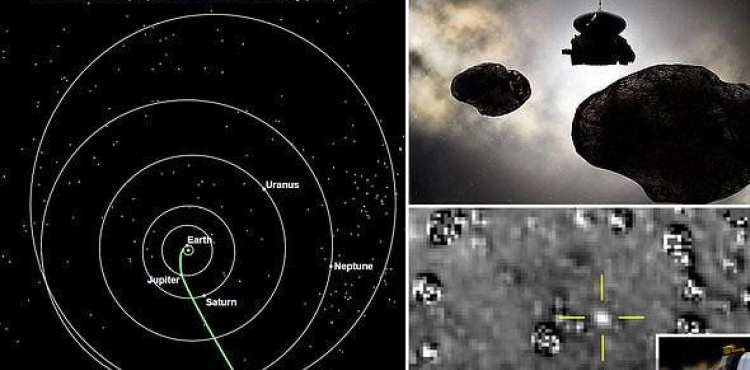Scientists from the New Horizons mission to NASA have released the first detailed images of the latest asteroid discovered in the Kiber belt.
The New Horizon probe carried out the longest flight in history at 12:33 am on New Year´s Day when it approached the Ultima Thule or approximately 2200 miles (about 3,540 km) from its surface at 31,500 miles (about 50,694 km) per hour.
NASA said the new images from 17,000 miles (27,000 km) revealed that Oltima Thul´s "two-contact" consists of two areas connected at a distance of 19 miles (31 km) from each other. 19 km) and the smaller area Thul (9 miles / 14 km).
The team said the two fields joined 99 percent early on the way back to the formation of the solar system and did not collide faster than two cars in a minor accident.
The appearance of Ultima Thol, unlike anything humans have seen before, illuminates the processes that built the planets four and a half billion years ago, NASA said.
"The probe, like the time machine, takes us back to the birth of the solar system, and we are witnessing the physical representation of the beginning of the formation of the planets," said Geoff Moore, the leader of New Horizons Geology and Geophysics.
"The Ultima Thule study helps us understand how the planets form, both in our solar system and those orbiting other stars in our galaxy," he said.
The data from New Year´s flight will continue to arrive in the coming weeks and months with more high-resolution images, NASA said.
"In the coming months, New Horizons will transfer dozens of data sets to Earth, and we will write new chapters in the Ultima Thule story and the solar system," said Helen Winter, project manager for New Horizons.
Ultima Thol, about 4 billion miles (about 6.4 billion kilometers) from the sun and a billion miles (1.6 billion kilometers) from Pluto, was the most distant asteroid to be explored, according to NASA.












